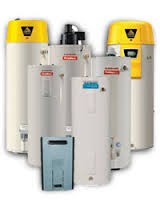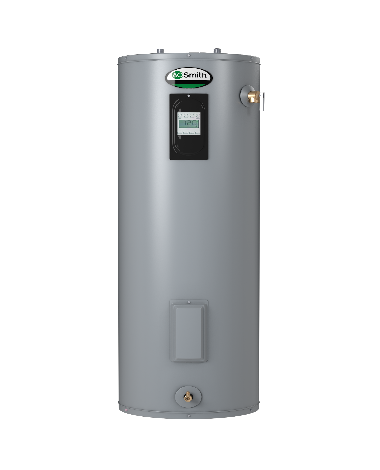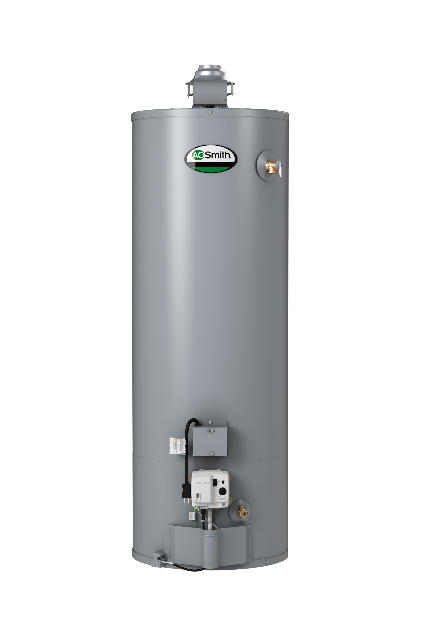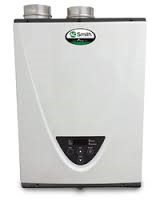Getting Started
Here are some basic terms you’ll encounter when you dip your toes into the world of solar water heating.
Most solar water heater systems have two basic parts: a collector and a storage tank. The collector sits on the roof (or another sunny location), and the storage tank usually sits next to the home’s conventional water heater. Although most residential systems have a separate storage tank just for the solar heated water, some systems have tanks where the solar-heated and conventionally heated water mixes.
- Flat plate collectors are the most common. A pump circulates liquid through the collector, which typically looks like a shallow glass-covered box. When the sun is shining, it heats up the liquid in the collector. When the liquid is hot enough, the pump comes on and moves the hot water to a storage tank. In some systems, the liquid is potable water that’s stored in a tank that feeds into the home’s hot water pipes. In other systems, the liquid is an antifreeze solution that flows through a heat exchanger to transfer heat (but not liquid) to the home’s potable water.
- An evacuated tube collector also uses a pump to circulate water. It’s more efficient than a flat plate collector, but a lot more expensive. Water is heated inside a vacuum, so there’s less heat loss than with flat plate collectors. Rather than looking like a glass box, the collector has rows of metal fins. As with a flat plate collector, the heated water is stored in a tank, usually next to the conventional water heater.
- Batch collectors are considered passive water heaters. They don’t use pumps, which reduces electricity use and maintenance. But they require the storage tank to be placed higher than the collector, so weight can be an issue if the collector and tank are on the roof. When water in the collector gets hot enough, it naturally rises and is replaced by cooler water from the storage tank. Batch collectors are best in mild climates where freezes are rare (in cold climates, they need to be drained for the winter months).
- Before hiring a contractor, ask the following questions:
- Does the solar professional have experience designing and installing the type of system you want?
- If you are in the market for a solar pool heater, for example, don’t hire a contractor who has only installed photovoltaic systems.
- How many years has the contractor has been in the solar business and how many installations have they done? Solar is booming in many parts of the country; be cautious about hiring a newbie contractor.
- Is the contractor licensed? Some states require solar contractors to have special licenses; check with the contractors’ license board in your state about requirements.
- What specific services will the solar contractor provide? Most offer a “turnkey” service: they’ll analyze your site and energy needs, design an appropriate system, procure the equipment and materials, handle the utility company and rebate paperwork, obtain any necessary permits, and install the system.
- Are the bids you received based on comparable information? When evaluating bids, make sure they are for the same type and size system. The bids should include all costs associated with buying and installing the system, including hardware, installation, permits, and grid connection (for PV systems). For PV systems, the bids should state the expected energy output in kilowatt-hours. Bids for solar hot water systems should include an estimate of how much energy will be saved in kilowatt-hours or “therms” (which each contain 100,000 Btu).
















